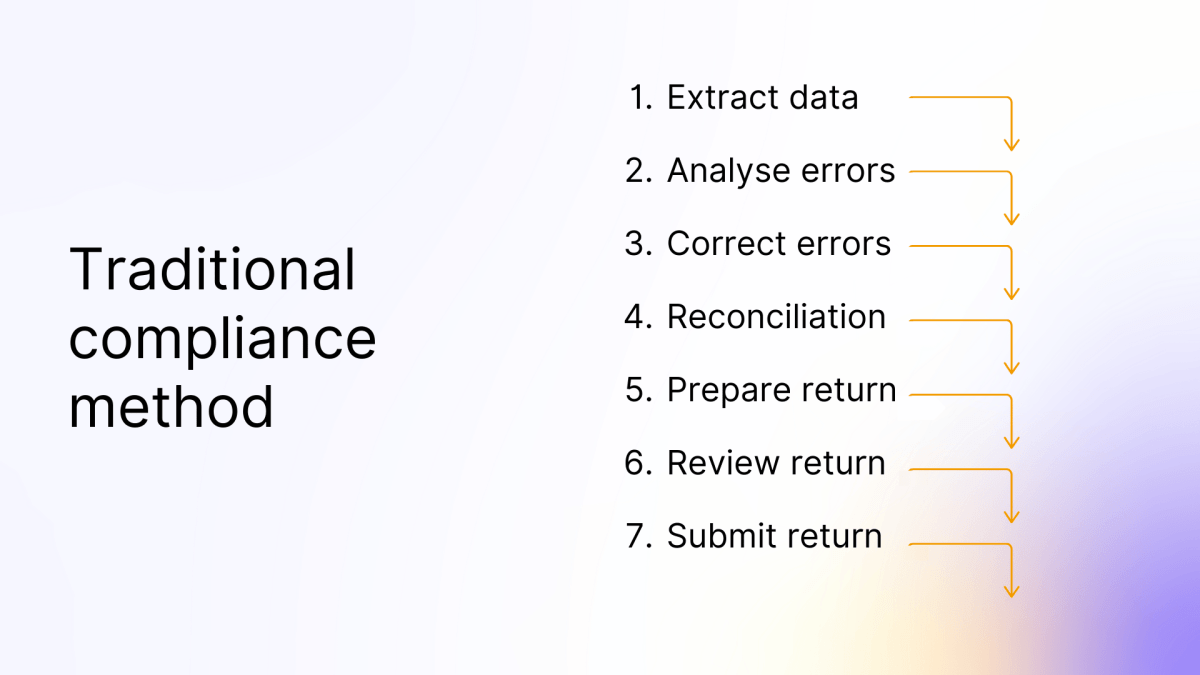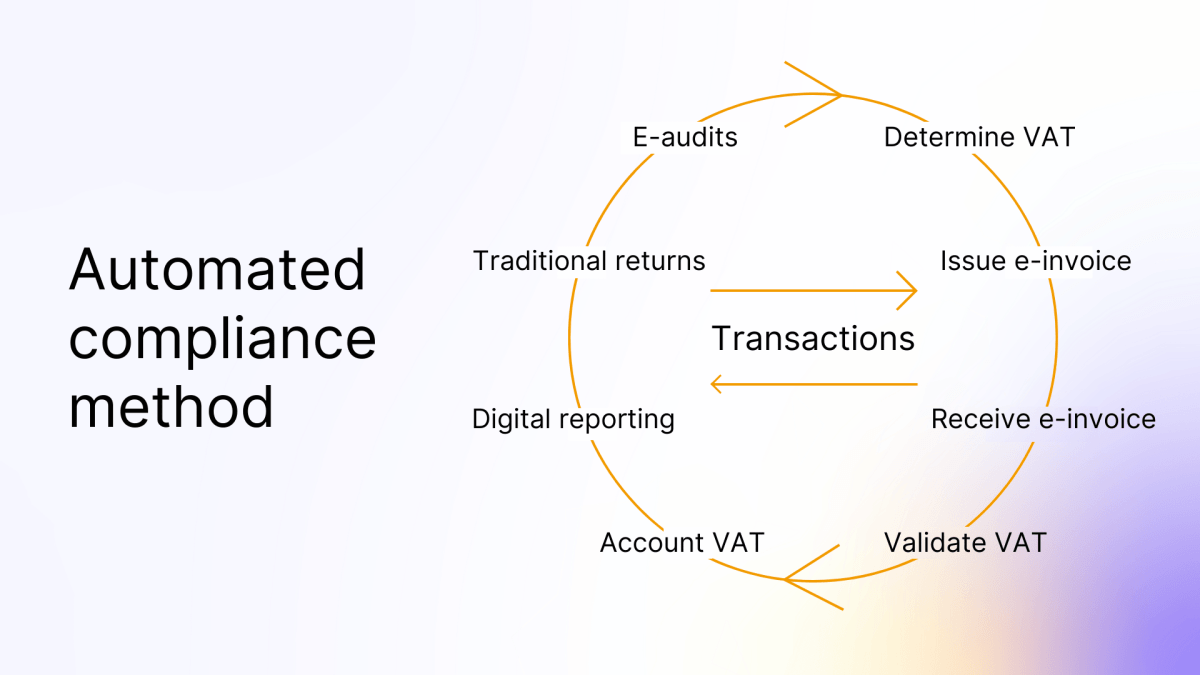In the fast-paced world of tax compliance, automation is a game-changer, reshaping how businesses handle Value Added Tax (VAT) obligations. With the help of advanced tax technology tools, companies can now automate and streamline VAT compliance processes, significantly reducing the risk of errors, enhancing efficiency, and ensuring strict compliance with local and international tax regulations.
These tools provide real-time data analytics, seamless integration with existing financial systems, and automatic updates in response to legislative changes.
However, the shift to an automated compliance method is long, and many companies still rely on a more traditional method, which includes manual data entry, handling, and calculations. As more countries introduce mandatory digital reporting and e-invoicing rules, businesses must adapt and implement automated solutions.
The diagrams below show the difference between a traditional and an automated compliance method.


Aleksandar Marinkovic
1stopVAT Tax Researcher

